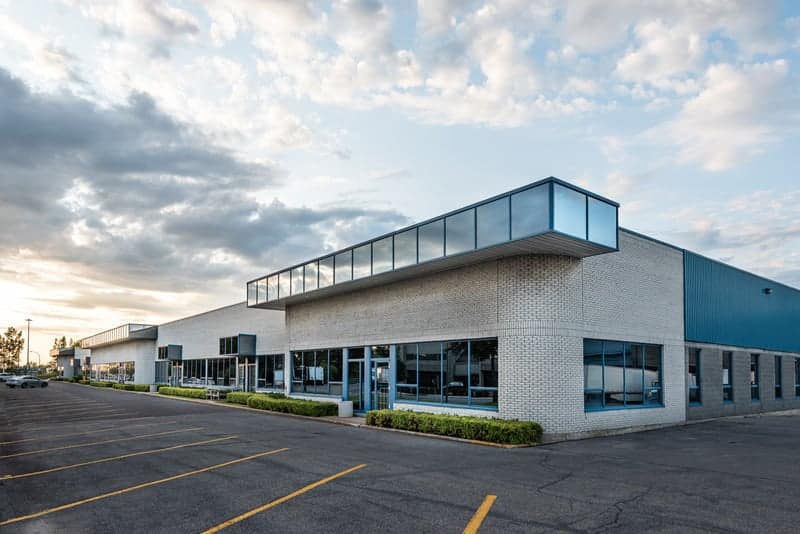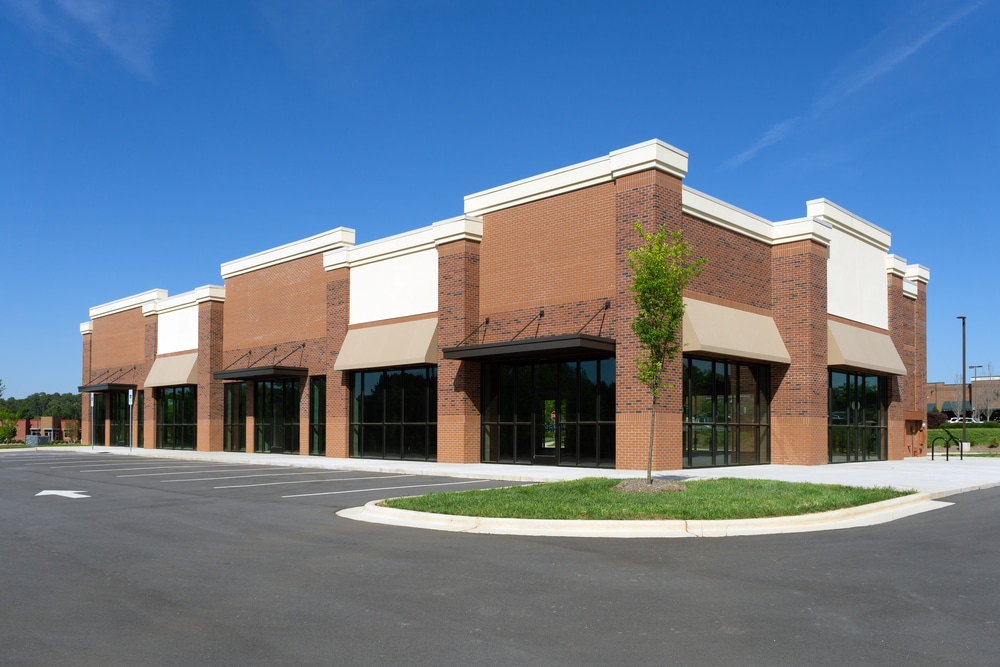The Price of Privacy: How Much Does Office Window Tinting Cost?
Creating a workspace that offers the perfect balance between natural light and privacy is a challenge many businesses face. The modern trend of open office designs prioritizes collaboration and transparency, but it often sacrifices privacy. Sensitive meetings, computer screens visible through windows, or even distractions from outside can all hinder productivity and pose security concerns.
This is where office window tinting steps in as a practical solution. Not only does it enhance privacy, but it brings a host of additional benefits like energy efficiency and glare reduction. But what should you expect when it comes to the office window tinting cost? This blog will break down the expenses, factors affecting pricing, and why it might be one of the best investments for your office space.
Understanding Office Window Tinting
What is Window Tinting?
Window tinting involves applying a thin film to the surface of your windows to enhance privacy, reduce glare, and block out harmful UV rays. Using advanced adhesive technology, the film adheres seamlessly to the window surface, providing a cost-effective way to modify the glass without needing replacement.
The science behind these films lies in their composition. Some films are dyed, others are layered with reflective elements or ceramic components to block light selectively. This makes them versatile for achieving varying levels of privacy and sunlight management.

Office Window Tinting
Types of Window Tinting Films
Not all window tints are created equal. Here’s a quick look at the most common types available for office spaces:
- Dyed Films
Economical and simple, dyed films absorb heat and provide moderate privacy. However, they tend to fade over time and may not be as durable. - Metalized Films
Infused with tiny metallic particles, these films are excellent at blocking heat and enhancing durability. They offer a reflective appearance but can interfere with wireless signals. - Ceramic Films
Premium-quality films that contain ceramic particles, these are highly durable, excellent for UV protection, and allow natural light while maintaining privacy. They do come with a higher price tag. - Reflective Films
These films create a mirrored effect on the outside, ensuring maximum privacy during the daytime while also reducing heat and glare. They may not be ideal for all office designs due to their aesthetics.
Benefits of Window Tinting
Why should a business consider window tinting in the first place? Here are its top benefits:
- UV Protection
Block up to 99% of harmful UV rays, protecting employees and minimizing sun damage to furniture and electronics. - Energy Efficiency
Tinting reduces heat gain in the summer and heat loss in the winter, leading to lower energy bills. - Glare Reduction
Say goodbye to distracting sunlight on computer screens and uncomfortable hotspots during work hours. - Privacy Enhancement
Protect confidential information and create a more focused environment by limiting visibility into your office.
The Cost Factors of Office Window Tinting
Material Costs
Prices for window tinting films vary widely depending on the type and quality.
- Dyed films generally cost between a few hundred to around a thousand dollars per window, depending on the size.
- Metalized films can range from a few hundred to several thousand dollars, again depending on the window size and desired quality.
- Ceramic films are the most expensive, with prices ranging from a few thousand to tens of thousands for large or specialized windows.
High-quality films often come with extended warranties, making them a cost-effective long-term investment.
Installation Costs
Professional tint installation ensures durability and superior aesthetics. Installation costs depend on factors like window size, building height, and labor rates.
- Small office spaces can expect to pay a few hundred to a few thousand dollars for installation.
- Large office buildings or high-rise offices may require specialized equipment and expertise, resulting in higher installation costs.
- Complex installations, such as high-rise office buildings or uniquely shaped windows, may incur additional charges.
On average, a moderate office installation may cost anywhere from a few hundred to several thousand dollars.
Additional Costs to Consider
Office window tinting requires minimal maintenance, but eventual costs can arise, including cleaning supplies tailored for tinted surfaces or repairs when films wear out. High-quality films may last 10–15 years, offering significant long-term value.

Office Window Tinting Service
Understanding the Factors Influencing Window Tinting Costs
- Film Quality: The quality of window films significantly affects their price. Ceramic films, for instance, are often pricier due to their superior performance and durability compared to lower-cost dyed films. Investing in high-quality films can offer long-term benefits, such as enhanced UV protection and energy efficiency.
- Film Type: Different film types provide unique benefits that impact cost. Reflective films are excellent for privacy, while dual-pane films improve heat control. These specialized features often come with a higher price tag but can add significant value depending on your priorities.
- Window Size and Shape: The dimensions and design of your windows also play a crucial role in pricing. Larger or unusually shaped windows, especially those in older buildings, might require custom films. This need for customization can lead to increased costs, but it ensures a perfect fit and optimal performance.
- Installation Complexity: The complexity of the installation process can also affect the overall cost. High-rise buildings or windows with intricate frames may require more labor-intensive work, resulting in higher installation charges. However, professional installation guarantees quality results and longevity.
By understanding these factors, you can better navigate your window tinting options and find a solution that meets both your aesthetic and functional needs while staying within your budget.
Budget-Friendly Window Tinting Options
Low-Cost Film Options
For businesses on a budget, dyed and metalized films offer affordability with decent performance. While they may lack the advanced properties of ceramic films, they deliver essential privacy and UV defense effectively.
DIY Installation Tips
If you’re considering applying window tinting yourself to save money, keep these tips in mind:
- Tools Needed: Purchase a window film application kit, including a squeegee, utility knife, and cleaning solution.
- Prep the Surface: Ensure windows are spotless before applying the film to avoid bubbles and creases.
- Cut Precisely: Measure accurately and cut the film slightly larger than the window to trim it neatly during application.
While DIY installation might save labor costs, professional results are generally more polished and longer-lasting.
Value for Money
Even though tinted windows require an upfront investment, they deliver long-term savings by reducing energy bills and preventing costly repairs due to sun damage.
Choosing the Right Window Tint for Your Office
- Assessing Your Needs: Evaluate priorities like UV protection, privacy, and design aesthetics. For example, confidential workspaces may benefit from reflective films, while open layouts might favor ceramic tints for better natural light.
- Regulatory Considerations: Ensure compliance with local laws on tint darkness and reflectivity, which may vary based on location and building use.
- Consulting with Professionals: Professionals provide accurate measurements and recommendations tailored to your office’s requirements. Opting for expert installers also secures warranty coverage and ensures the flawless application of films.
Sun Guard Tint: Enhance Your Office Space with Advanced Window Solutions
- Why Choose Sun Guard Tint? Sun Guard Tint is not just about covering windows; it’s about transforming your office environment. Our films are designed to improve comfort, aesthetics, and energy efficiency, making your workspace more pleasant and productive.
- Tailored Customization: Every office is unique, and so are our solutions. Choose from our range of high-performance films, including heat-reducing ceramic options that maintain a comfortable interior climate and reflective films that enhance privacy without sacrificing natural light. Our products seamlessly blend aesthetics and functionality, ensuring your office looks as good as it feels.
- Investment Worth Making: While our premium films might have a higher upfront cost, they are an investment in quality and sustainability. Sun Guard Tint products are engineered for durability and energy efficiency, providing significant savings on energy bills over time. Enjoy peace of mind knowing that our films outperform many competitors in both longevity and performance, ensuring excellent return on investment.
- Experience the Sun Guard Difference: Join the ranks of satisfied customers who have transformed their office spaces with Sun Guard Tint. Discover how our cutting-edge solutions can redefine your office environment, creating a space where style meets substance.

Office Window Tinting Cost
Cost-Benefit Analysis: Is Window Tinting Worth It?
- Evaluate ROI: Businesses can calculate return on investment by considering reduced energy bills and prolonged furniture longevity. Tinted windows typically save up to 30% on cooling costs annually.
- Case Studies: For instance, a Suffolk County marketing agency reduced their monthly energy bills by 25% after installing Sun Guard Tint films throughout their office. Clients noted the improved client meeting spaces, attributing it to the added privacy and glare-free environment.
- Potential Drawbacks: While window tinting has many benefits, some films may void window warranties or present aesthetic issues if incorrectly installed. Choosing a reputable provider minimizes these risks.
Maintenance and Longevity of Window Tinting
- Care Instructions: Clean tinted windows with soft, non-abrasive cloths and ammonia-free cleaners to maintain clarity and avoid scratches.
- Signs of Damage or Wear: Look for peeling edges, bubbles, or fading color as indicators that it’s time to replace the window film.
- Lifespan Expectations: High-quality films, such as ceramic or Sun Guard Tint, generally last 10–15 years with proper care, making them a sound investment.
Conclusion
Window tinting offers a wealth of benefits for businesses, including energy savings, improved aesthetics, and increased comfort. By understanding the factors that impact cost and considering your specific needs, you can find a budget-friendly solution that meets all your requirements. Whether opting for low-cost films or investing in advanced solutions like Sun Guard Tint, properly installed window tinting is worth it in terms of long-term savings and enhanced office environments. Consult with professionals to determine the best options for your office space and experience the transformative effects of window tinting firsthand. Remember to prioritize proper maintenance to ensure longevity and maximize your investment. So don’t hesitate, enhance your office space with window tint today!
Sun Guard Tint
https://www.google.com/maps?cid=5789725123746519054
7879 S 1530 W #400, West Jordan, UT 84088, United States
(801) 657-9260
https://sunguardtint.com/